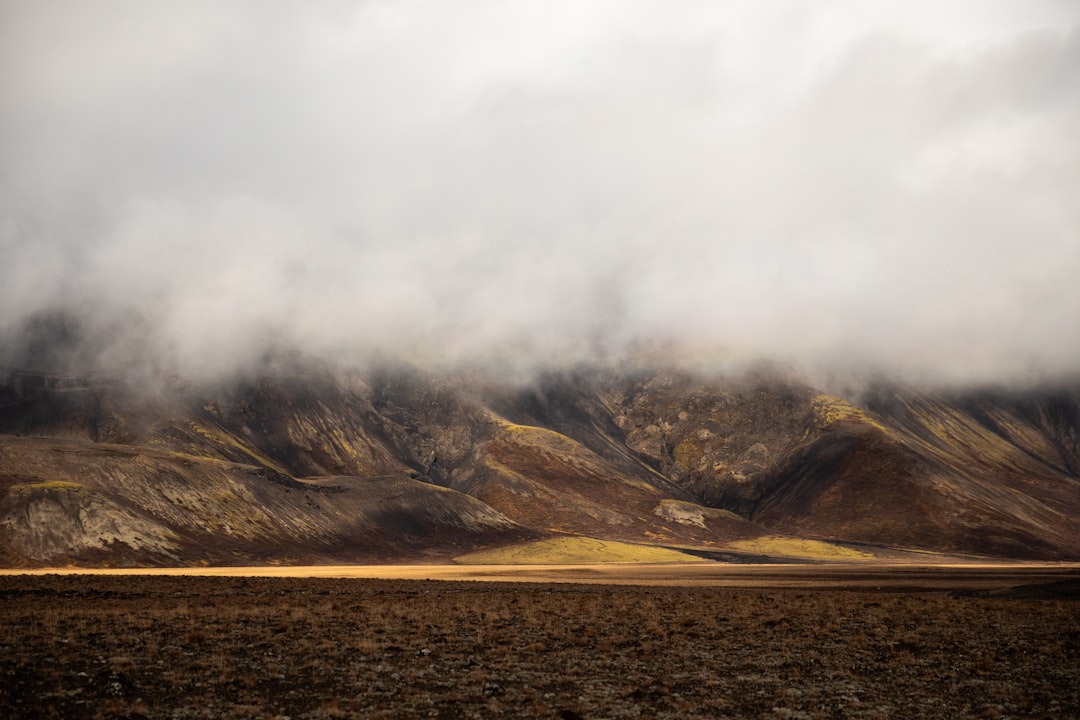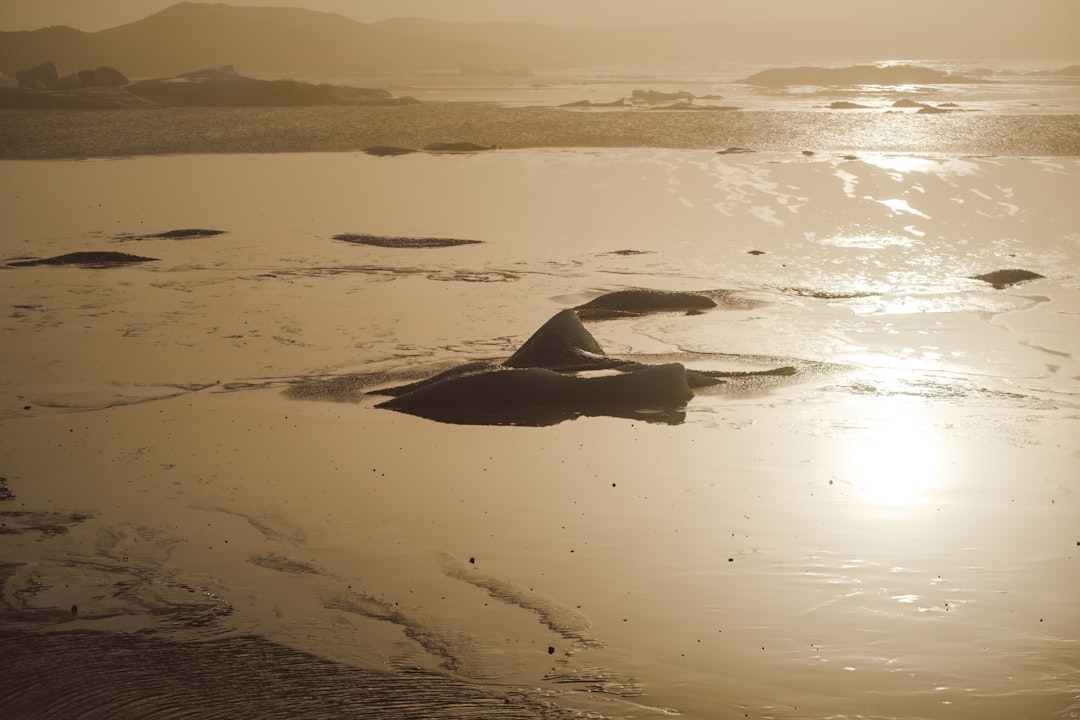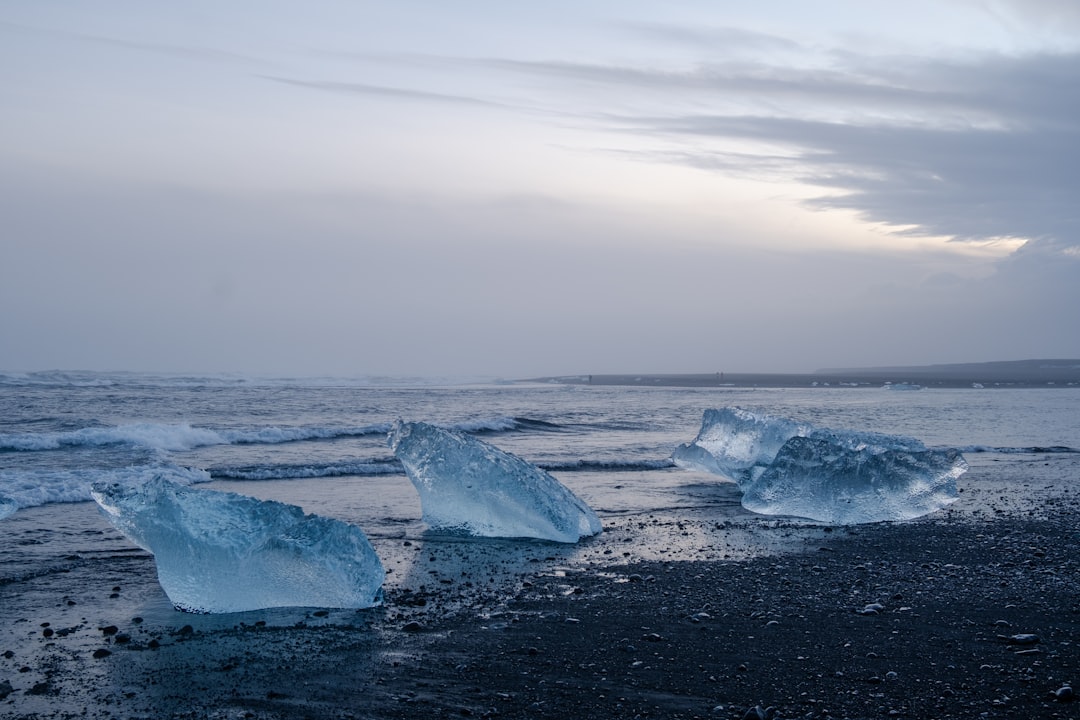Uncovering Iceland’s Hidden Gems 7 Affordable Off-the-Beaten-Path Destinations Beyond Reykjavik
Uncovering Iceland's Hidden Gems 7 Affordable Off-the-Beaten-Path Destinations Beyond Reykjavik - Grotta Beach - A Local's Sunset Paradise Near the Capital

This hidden gem, accessible from the mainland, is a popular spot for outdoor enthusiasts, who flock to the area for activities like walking, biking, and birdwatching.
Grotta Beach is located on the Seltjarnarnes Peninsula, a unique geological formation that juts out into the Atlantic Ocean near Reykjavik, the capital of Iceland.
This strategic location provides visitors with unobstructed views of the sunset and the Northern Lights.
It has become a popular destination for birdwatchers, with over 106 documented bird species inhabiting the area.
Interestingly, Grotta Beach is closed for public access from May 1st to July 15th each year, a measure implemented to protect the nesting grounds of the diverse avian population that calls this area home.
Beneath the surface of Grotta Beach, a hidden natural gem can be found - a geothermally heated foot bath, where visitors can soak their feet and enjoy the soothing warmth of the volcanic activity that lies beneath the island.
The black sand of Grotta Beach is a remarkable geological feature, formed over centuries by the erosion of the surrounding basalt rock, providing a stark contrast to the blue waters of the Atlantic Ocean.
Grotta Beach has been recognized as a hidden gem of Iceland by various travel authorities, with Tripadvisor ranking the Grotta Lighthouse as the 13th most popular attraction in Reykjavik, out of 144 listed activities, with an impressive 5/5 rating from over 550 reviews.
What else is in this post?
- Uncovering Iceland's Hidden Gems 7 Affordable Off-the-Beaten-Path Destinations Beyond Reykjavik - Grotta Beach - A Local's Sunset Paradise Near the Capital
- Uncovering Iceland's Hidden Gems 7 Affordable Off-the-Beaten-Path Destinations Beyond Reykjavik - Aldeyjarfoss Waterfall - Nature's Remarkable Masterpiece
- Uncovering Iceland's Hidden Gems 7 Affordable Off-the-Beaten-Path Destinations Beyond Reykjavik - Hvitserkur Rock Formation - An Imposing Coastal Monument
- Uncovering Iceland's Hidden Gems 7 Affordable Off-the-Beaten-Path Destinations Beyond Reykjavik - Glyufrafoss Waterfall - A Secret Gem Near Seljalandsfoss
- Uncovering Iceland's Hidden Gems 7 Affordable Off-the-Beaten-Path Destinations Beyond Reykjavik - Brarfoss Waterfall - Icy Blue Waters in Picturesque Surroundings
- Uncovering Iceland's Hidden Gems 7 Affordable Off-the-Beaten-Path Destinations Beyond Reykjavik - The Icelandic Highlands - Trekking and Camping Amidst Spectacular Scenery
Uncovering Iceland's Hidden Gems 7 Affordable Off-the-Beaten-Path Destinations Beyond Reykjavik - Aldeyjarfoss Waterfall - Nature's Remarkable Masterpiece
This 20-meter cascade plunges through a narrow canyon framed by mesmerizing basalt columns, creating a powerful and serene display that has earned it a reputation as one of the country's most remarkable destinations.
The Aldeyjarfoss Waterfall is situated in the remote and rugged Northern Highlands of Iceland, where the nearest town, Akureyri, is a staggering 74 km (46 miles) away, requiring a 15-hour journey through winding gravel roads.
The waterfall's dramatic 20-meter drop is framed by mesmerizing twisted basalt columns, formed by the rapid cooling of volcanic lava, creating a natural architectural wonder that has captivated photographers and artists alike.
Remarkably, the waterfall's powerful current is a result of the Skjálfandafljót river, which originates from the Vatnajökull glacier, one of the largest ice caps in Europe, providing a continuous flow of glacial meltwater.
Geologists have discovered that the basalt columns surrounding Aldeyjarfoss are part of an ancient lava flow that solidified in a unique hexagonal pattern, a rare geological phenomenon that is found in only a few places around the world.
The waterfall's remote location and rugged access have made it a prime destination for thrill-seekers, with adventurous hikers and off-road enthusiasts flocking to the area to challenge the treacherous gravel roads and F-roads leading to the site.
Despite its remote and difficult-to-reach location, the Aldeyjarfoss Waterfall has gained recognition as one of Iceland's most iconic natural wonders, with its stunning visual impact and unique geological features drawing visitors from around the world to witness this remarkable masterpiece of nature.
Uncovering Iceland's Hidden Gems 7 Affordable Off-the-Beaten-Path Destinations Beyond Reykjavik - Hvitserkur Rock Formation - An Imposing Coastal Monument

The Hvitserkur Rock Formation, also known as the "Rhino Rock," is a 15-meter-tall basalt rock stack located along the eastern shore of the Vatnsnes peninsula in northwest Iceland.
Its unique shape, resembling a petrified troll, sea monster, dragon, rhino, or dinosaur, has given rise to various myths and legends surrounding the formation.
Hvitserkur is a popular attraction in North-West Iceland and can be accessed by a short walk from the nearest parking area, making it an off-the-beaten-path destination for adventurous travelers.
The Hvitserkur Rock Formation stands at an impressive height of 15 meters (49 feet), towering over the Vatnsnes peninsula in northwest Iceland.
The rock's unique shape, often described as resembling a petrified troll, sea monster, dragon, rhino, or dinosaur, has given rise to numerous legends and folklore surrounding its origin.
The base of the rock formation features two distinctive holes, giving it the appearance of a creature drinking from the sea, adding to the mythical aura surrounding Hvitserkur.
Hvitserkur, which translates to "white shirt" in Icelandic, is coated in the guano (excrement) of seabirds such as shags and fulmars, giving it a distinctive light coloration.
The rock formation is a popular nesting ground for various seabird species, including gulls, shags, and fulmars, making it an important ecological site.
Hvitserkur is accessible via a 30-kilometer (19-mile) gravel detour from the Ring Road, highlighting its off-the-beaten-path location and the dedication required to reach this natural marvel.
The nearest town to Hvitserkur, Hvammstangi, has a small population, underscoring the remote and untouched nature of the Vatnsnes peninsula where the rock formation is located.
Geologists have determined that Hvitserkur is a result of volcanic activity, with the basalt rock stack forming over time through the erosion of the surrounding landscape.
Uncovering Iceland's Hidden Gems 7 Affordable Off-the-Beaten-Path Destinations Beyond Reykjavik - Glyufrafoss Waterfall - A Secret Gem Near Seljalandsfoss
Tucked inside a cave, this 40-meter-high waterfall on the Gljfur River is a true hidden gem, accessible only by traversing a short stream.
Glyufrafoss is a hidden waterfall that is often overlooked by tourists visiting the more famous Seljalandsfoss, despite being located just a short distance away.
The waterfall's height of 40 meters (131 feet) makes it a significant natural feature, yet it remains relatively unknown compared to its larger counterpart.
To access Glyufrafoss, visitors must traverse a short stream and enter a narrow, dark valley, adding to the sense of discovery and adventure.
Geologists have discovered that the bedrock surrounding Glyufrafoss is composed of a unique volcanic basalt formation, lending an otherworldly appearance to the waterfall's setting.
The Gljfur River, which feeds the Glyufrafoss waterfall, originates from the nearby Eyjafjallajökull glacier, providing a consistent flow of glacial meltwater.
Birdwatchers have identified numerous avian species that call the Glyufrafoss area home, including the elusive Harlequin duck and the majestic white-tailed eagle.
Despite its remote location, Glyufrafoss is accessible by a short hike from the nearby Hamragarar camping area, making it a feasible destination for adventurous travelers.
Uncovering Iceland's Hidden Gems 7 Affordable Off-the-Beaten-Path Destinations Beyond Reykjavik - Brarfoss Waterfall - Icy Blue Waters in Picturesque Surroundings

Brarfoss Waterfall, located about an hour and a half from Reykjavik, is a hidden gem in Iceland known for its icy blue waters and picturesque surroundings.
The waterfall is a popular off-the-beaten-path destination, with a hike of around 3.5 km (2.2 miles) one-way to reach it, taking roughly an hour to walk.
The unique blue-colored water in the waterfall's rapids makes Brarfoss a must-visit destination for nature lovers and adventure seekers.
Brarfoss Waterfall is fed by the Langjökull glacier, one of the largest glaciers in Iceland, giving its waters a vibrant blue hue due to the high mineral content.
The waterfall is situated at the intersection of two tectonic plates, the North American and Eurasian plates, creating a dramatic geological backdrop.
The waterfall's powerful flow is a result of the rapid melting of the Langjökull glacier, which is experiencing accelerated retreat due to climate change, potentially impacting the waterfall's future.
Geologists have discovered that the rock formations surrounding Brarfoss are composed of ancient volcanic basalt, formed during the last ice age when the area was covered in glaciers.
The Brarfoss trail is known for its diverse flora, including rare alpine plant species that have adapted to the harsh Icelandic climate, adding to the scenic value of the hike.
Native Icelandic birds, such as the Arctic tern and the Harlequin duck, have been spotted in the Brarfoss area, providing birdwatchers with opportunities to observe these unique species.
Geothermal activity in the region has led to the formation of natural hot springs near the waterfall, which some visitors use to soak their feet and warm up after the hike.
Despite its remote location, Brarfoss Waterfall has become a popular destination for photographers, who are drawn to the unique blue color and the dramatic contrast with the surrounding basalt cliffs.
The Brarfoss trail was recently upgraded with wooden boardwalks and viewing platforms to improve accessibility and protect the fragile ecosystem, though some purists argue this detracts from the waterfall's natural charm.
Uncovering Iceland's Hidden Gems 7 Affordable Off-the-Beaten-Path Destinations Beyond Reykjavik - The Icelandic Highlands - Trekking and Camping Amidst Spectacular Scenery
Visitors can explore volcanic valleys, canyons, and geothermal areas, and witness the unique beauty of Iceland's remote wilderness.
The Highlands cover over 40% of Iceland's interior, providing ample opportunities for outdoor enthusiasts to discover hidden gems beyond the capital city of Reykjavik.
The Icelandic Highlands cover over 40% of the country's total landmass, making it one of the largest uninhabited wildernesses in Europe.
The region's volcanic activity has led to the formation of over 30 geothermal areas, including the Hveradalir Geothermal Area, which features vibrant steam vents and mud pools.
The Highlands are home to the Vatnajökull glacier, the largest ice cap in Europe outside of the Russian Arctic, covering an area of over 8,100 square kilometers.
The Laugavegur Trail, one of the most popular trekking routes in the Highlands, features diverse landscapes ranging from lush, green valleys to stark, volcanic deserts.
Hikers on the Fimmvörðuháls Trail can witness the dramatic interaction between fire and ice, as the trail passes between the Eyjafjallajökull and Mýrdalsjökull glaciers.
The Highlands' remote location and rugged terrain have made it a popular destination for off-road enthusiasts, with a network of challenging F-roads connecting various sites.
The Valley of Thor, a glacial valley located in the heart of the Highlands, is known for its breathtaking views and is a prime camping destination for adventurous travelers.
Geologists have discovered that the Highlands are home to some of the oldest rock formations in Iceland, with some dating back to the Tertiary period, over 65 million years ago.
The Highlands are a haven for birdwatchers, with over 80 species of birds, including the elusive pink-footed goose and the iconic Icelandic falcon.
The region's extreme weather conditions, with sudden temperature changes, high winds, and unpredictable precipitation, have earned it the reputation of being one of the most challenging trekking destinations in the world.
Despite its remote location, the Highlands have been the site of significant historical events, including the gathering of the Althing, the world's oldest existing parliament, which was held in the region for over 800 years.
